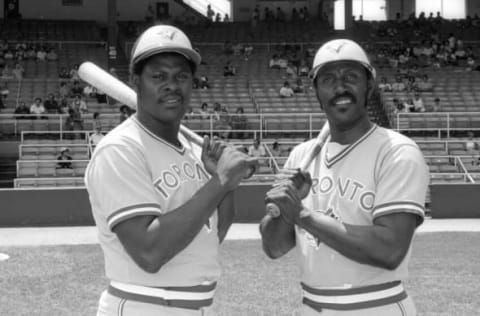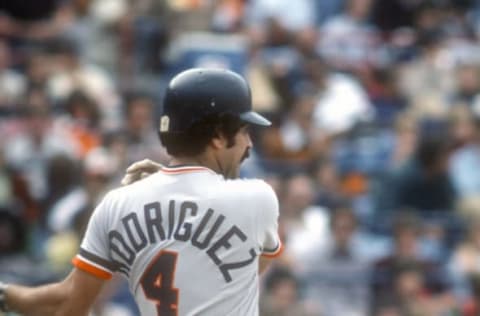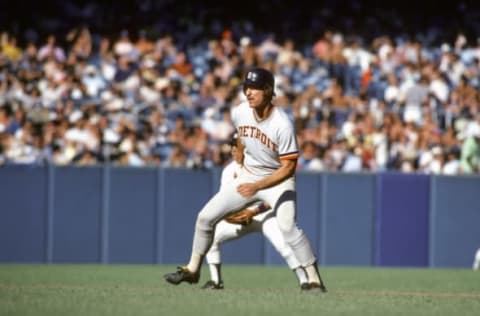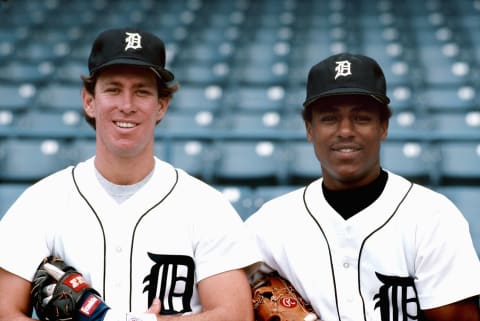Opening Day Was a Good Day For the 1978 Detroit Tigers

The Detroit Tigers launched a new era in 1978 when two key rookies made their first Opening Day starts together. In a way, that game was also the beginning of the end for a lovable pitching sensation.
If you ask some people what the most festive day of the year is, they may pick a holiday like Christmas, Halloween, or the Fourth of July. If you pose the same question to ardent baseball fans, Opening Day may be the only answer you get, especially if their favorite team is the Detroit Tigers.
On Opening Day in 1978, Tigers fans celebrated what Jim Hawkins of the Detroit Free Press described as “an ideal start”, one that “could hardly have been much better”.
Pre-Game Coverage
The festivities actually took place a day later than originally scheduled. The ’78 Detroit Tigers were supposed to host the Toronto Blue Jays on Thursday, April 6, but the game was rained out and postponed until the following day. Friday’s forecast, sunny and 67 degrees with a breeze blowing out toward right field, was much better for baseball.
There was a full house at Tiger Stadium, ready to cheer on Mark “The Bird” Fidrych and the Tigers. Two seasons earlier, large crowds in Detroit had become the norm whenever Fidrych pitched. The excitement of seeing The Bird in action again, combined with the anticipation of a brand-new season, lured 52,528 people to the ballpark. The Tigers hadn’t drawn over 50,000 for a home opener since 1971. It was also the largest audience to attend one of Fidrych’s starts at home. Among the attendees on this afternoon was Paul Fidrych, Mark’s dad. He came in from Massachusetts to watch his son’s first Opening Day start.
Mark Fidrych undoubtedly would’ve been the Tigers’ starting pitcher in the 1977 opener if not for the infamous left-knee injury that he sustained in spring training. After finally debuting in late May, Fidrych didn’t make it to the end of the first inning on July 12. He faced three batters before leaving with right-shoulder trouble and didn’t pitch again that season. The Blue Jays were the Bird’s opponents on that fateful day, so it was fitting that he would be facing them again in his return to the mound for this April 7th matchup
Toronto countered with Dave Lemanczyk, who debuted with Detroit in 1973. He was part of the first wave of prospects that emerged during an era of rebuilding. The right-hander pitched primarily as a reliever for the Tigers, but he also picked up 10 starts for them in 1976. Ultimately, Lemanczyk was unable to establish himself as a keeper, and he was left unprotected in that fall’s expansion draft. The brand-new Blue Jays snapped him up. Lemanczyk was charged with 119 earned runs in 1977, which tied him with Oakland’s Vida Blue for the American League lead. Ironically, the Tigers scored more earned runs off Lemanczyk (15) than any other opponent that year.
Optimism runs rampant through the major leagues on Opening Day, and it was no different in the Motor City in 1978. Manager Ralph Houk was beginning his fifth (and final) season at the helm of the Detroit Tigers. He was pleased with what he’d seen down in Lakeland. He boasted,
“In all my years in baseball, I’ve never had a team come out of spring training looking as good as this. Right now, this club has pitching, hitting, and defense. I honestly can’t ask for anything more. Most important, this is a ground-ball pitching staff.”
Compared to a year earlier, the defense that Houk mentioned had a relatively new look to it. Five players; second baseman Lou Whitaker, shortstop Alan Trammell, third baseman Phil Mankowski, left fielder Steve Kemp, and right fielder Tim Corcoran; were appearing in an Opening Day starting lineup for the first time. Kemp, who debuted as a pinch-hitter in the ’77 opener before taking the departed Willie Horton’s job, was the most experienced of that bunch.
Tiger Stadium also sported a new look in 1978, although it was still a work in progress. The old ballpark was in the midst of a major renovation. Throughout the lower deck, blue plastic seats replaced the green wooden chairs that had been in place for what may have seemed like forever to longtime fans. The upper deck hadn’t yet been refurbished, and the old chairs were still in place. The visually striking dual-color scheme was captured on film for posterity in May, when scenes were shot for a made-for-TV biopic about Tiger center fielder Ron LeFlore.

The Detroit Tigers kick off the 1978 season
Fidrych easily handled the Blue Jays in the top of the first as the 78th season of Detroit Tigers baseball got underway. Rick Bosetti grounded out to Mankowski. Al Woods and Roy Howell each grounded back to The Bird. LeFlore drew a leadoff walk for the Tigers in the bottom half. A pair of groundouts moved him along to third, where he was stranded when Jason Thompson’s fly out to left ended the inning.
The Blue Jays’ two biggest acquisitions in spring training were the first two hitters to test Fidrych in the second. Rico Carty, a former National League batting champ and a .305 career hitter at that point, walked. John Mayberry, a Detroit native who averaged nearly four dozen extra-base hits a year in six seasons with the Kansas City Royals, followed with a single to right field. Suddenly, the Jays had a threat brewing. Tom Hutton’s single up the middle, which Trammell couldn’t glove in time, drove Carty in with the game’s first run. Mayberry took third.
6-4-3
The tandem of Alan Trammell and Lou Whitaker got into the action when Dave McKay grounded to Trammell. The shortstop fed his second baseman for the force play on Hutton, but Whitaker had to leap in order to avoid being taken out by the baserunner’s slide. His relay to first baseman Thompson was in time to nab McKay. It was the first time that Trammell and Whitaker turned a double play together at Tiger Stadium. There would be many, many more.
Mayberry scored on the play, however, to give Toronto a 2-0 lead. Fidrych escaped further damage by inducing a grounder back to the mound off the bat of Luis Gomez. Kemp walked to lead off the second but was erased when Corcoran hit into a double play. Milt May put the Tigers on the board with a home run to the upper deck in right. That brought Whitaker up.
As a September call up in 1977, “Sweet Lou” made only three starts at home, and the Tigers drew under 10,000 in two of those games. With a much larger crowd gathered this time around, a new tradition was about to be introduced at the corner of Michigan and Trumbull. Fans greeted the 20-year-old with a rousing chorus of “Loooooooou!” A confused Whitaker initially thought he was being booed but caught on quickly.
Whitaker further endeared himself to his rooters with a walk and a stolen base in the second inning. Joe Falls of the Detroit Free Press wrote that the eventual 1978 American League Rookie of the Year had fans “buzzing with his dash and daring” and predicted that he “will have all their hearts by mid-May”. All these decades later, the Tiger who famously wore the soon-to-be-retired no. 1 still has them.
No. 1️⃣ will be retired. Forever. pic.twitter.com/w37p5xKlWr
— Detroit Tigers (@tigers) February 8, 2022
Trammell struck out to end the second frame. Fidrych bounced back in the third. He got Alan Ashby out on a grounder to Whitaker, then struck out Bosetti and Woods. With one out in the bottom of the third, Mankowski and Rusty Staub delivered back-to-back singles. Although Thompson struck out, Kemp tied the game, 2-2, with a single to left that drove in Mankowski.
Fidrych made quick work of the Blue Jays in the fourth. Howell grounded out to Whitaker and Carty grounded out to Fidrych. Thompson fielded a grounder off the bat of Mayberry, his fellow first baseman, and Fidrych hustled to the bag in time to complete the inning-ending play. With one out in the bottom half, Whitaker doubled to left field, and Trammell walked. Lemanczyk got a big out when he struck LeFlore out. The tide was about to turn, however.

Phil, The Man
For each of the seven season openers prior to this one, Aurelio Rodriguez was the Detroit Tigers’ starting third baseman. He was still with the team, and so Mankowski may have seemed like an odd choice to start the 1978 opener. Houk had already decided that he would be platooning a group of players, at least for the early stages of the season. Mankowski was part of the lineup that Houk wanted in there against right-handed pitchers.
In the fourth inning, Mankowski found himself in a two-on, two-out situation with a big opportunity to do some damage. He delivered. The left-handed hitter crushed a Lemanczyk pitch that landed in the upper-deck seats in right field. Mankowski’s three-run homer broke the tie and put the Tigers up, 5-2. The unlikely hitting hero, who was beginning his third season with the team, remarked,
“It feels good to get off on the right foot…So far, it’s the biggest thrill I’ve had, starting on Opening Day and then having a good game. I felt a lot more confident going into spring training that I would have a spot on the 25-man team, but I didn’t think I’d be starting Opening Day.”
It was the biggest home run of the eight that Mankowski hit in his career. Waiting for him at home plate were Whitaker and Trammell, who scored on the bomb, and Staub, who’d been in the on-deck circle. Staub followed Mankowski’s homer with a single to right, and that was it for Lemanczyk. Righty Jesse Jefferson came on to get the elusive third out for the Jays.
Pitching with a lead for the first time all day, Fidrych began the fifth by getting Hutton to fly out to left. It was the first ball that any of the visitors hit to the outfield since Hutton’s single to center back in the second inning. As the next Toronto batter strode to the plate, nobody at Tiger Stadium had any idea that the scariest moment of the game was about to happen.
Collision
McKay hit a slow roller on the right side of the infield. Whitaker and Fidrych both charged the ball, each unaware of the other’s presence. As a result, there was a collision. The Bird went airborne at the last second in an attempt to avoid his teammate, but his knee clipped Sweet Lou in the neck. The second baseman crumpled to the ground, and the pitcher tumbled over him, landing on his own right shoulder. Even now, seeing the photos of the crash that ran in the next day’s Detroit Free Press is enough to make one wince and shudder.
Both players were momentarily shaken up but stayed in the game. Whitaker described the impact as “one of those 15-second hurts”. He said that as soon as he looked around to see if his teammate was okay, Fidrych was already up and back on the mound. Afterward, Mark admitted that he was “out of my area”.
Houk guessed that Fidrych probably wasn’t “used to seeing anybody over that far”. The comment was interpreted as a compliment on Whitaker’s range. Indeed, Fidrych hadn’t played with a second baseman like Whitaker before. In The Bird’s first two seasons, five different guys started there behind him: Pedro Garcia, Chuck Scrivener, Gary Sutherland, Jerry Manuel, and Tito Fuentes. Of that bunch, only Sutherland (10 games with the St. Louis Cardinals) and Fuentes (13 games with the Oakland A’s) played in the major leagues in 1978. Needless to say, it didn’t take Whitaker too long to solidify the position in Detroit.
Disaster was averted, but the Tigers quickly found themselves on shaky ground. Gomez singled and Ashby walked to load the bases. That turned the lineup over for Bosetti, who worked the count full. Fidrych, who had been his usual animated self throughout the game, was clearly agitated. He needed a moment to stalk around the mound and talk to himself. The capacity crowd urged him on with a “Go, Bird! Go!” chant. Once he was ready again, The Bird bore down and blew strike three past Bosetti. Woods grounded out to Whitaker to end the threat. Fidrych said,
“When I got that guy out with the bases loaded, it made me happy. I kept telling myself, ‘Don’t try to overthrow, keep your rhythm, throw the ball down the middle of the plate and make him hit it.’ Then I struck him out, and that’s the neatest thing you can do.”
Whatever momentum the Blue Jays might have had brewing in the fifth was nonexistent in the sixth. Fidrych mowed Toronto down 1-2-3. The first two outs came on ground balls to Whitaker, who finished with six assists on the day. Thompson made an unassisted putout on the third grounder of the inning. In the seventh, Hutton grounded to Thompson, and Fidrych hustled to the bag to take the throw and make the play for the first out.
Fidrych’s eagerness to contribute defensively almost cost him after that. The Blue Jays’ next hitter, McKay, hit a dribbler up the first-base line. Fidrych bolted off the mound to field it, and he managed to hold on to the ball when he and McKay collided. It was a hard-earned second out. Afterward, The Bird offered an explanation that seems especially ominous in hindsight, considering how the rest of his career turned out. He said,
“In a game, you don’t ever think about getting hurt. If I’m gonna get hurt again, I’d rather get hurt on the field than off it.”

Detroit Tigers first baseman Jason Thompson goes off the roof
For his part, Jefferson had managed to keep the Tigers at bay for 2 1/3 innings after taking over for Lemanczyk, but he wasn’t able to leave unscathed. Thompson gave the crowd another thrill in the seventh inning with a leadoff home run that bounced off the roof in right-center field. One season earlier, Thompson had cleared that roof twice with monster home runs. Lynn Henning, then with the Lansing State Journal, reported that Thompson’s blast was only a couple feet shy of completely leaving the ballpark and was right in the vicinity of Reggie Jackson’s legendary homer in the 1971 All-Star Game. The Tigers had a comfortable 6-2 lead.
Thompson, Detroit’s biggest longball threat, was coming off a season in which he led the team with 31 homers. (He went on to lead the Tigers again in 1978 with 26.) The left-handed hitting slugger had been 0-for-3 in the game before unloading on Jefferson. Thompson said,
“The funny thing was, up until that time, I had been swinging hard. I finally told myself to just try and hit the ball square and it worked. I don’t know what it was – fastball, slider, or what – because it was in the shadows. But it was nice.”
In the eighth inning, the Blue Jays made one last attempt to get back into the game. Bosetti reached on an error by Mankowski, and Howell singled to center. With runners on the corners and two down, Fidrych took on Carty one more time. The 38-year-old designated hitter went on to hit a career-high 38 home runs in 1978, but Carty was helpless against a Fidrych slider. According to Jeff Jacobs of Port Huron’s The Times Herald, “he waved at it like a Little Leaguer”. Catcher Milt May called it a breaking pitch that “broke almost down to the ground”. It was Fidrych’s fifth strikeout of the game.
Although a pitcher making his first start after returning from a shoulder ailment today would be handled much differently, there was no doubt that afternoon that Houk was going to send The Bird out to finish what he started. Fidrych led the AL with 24 complete games in 1976, and he completed seven of the 11 starts he made in the injury-shortened 1977 season. Explaining his decision, Houk simply stated,
“The thing that amazes me is the way he can finish. In the eighth and ninth, he really goes after those hitters.”
Mayberry popped out to Mankowski in foul territory to begin the ninth inning. Hutton grounded out to Thompson, who made his third unassisted putout of the game. With one out to go, Fidrych kept McKay waiting at the plate momentarily while he chased after hot-dog wrappers that the breeze had carried out to the mound area. He tracked down and pocketed four of them, and the fervent Detroit Tigers fans cheered the eccentric pitcher on all the way.
Finally, it was time to get back to business, and Fidrych induced a grounder back to the mound with his 114th or 115th pitch of the game (reports varied, but of course this was back in an era before pitch counts were emphasized and scrutinized). He made the toss to Thompson to end the game. Defensively, Fidrych helped his own cause by tallying three putouts and five assists in the Tigers’ 6-2 victory.

Detroit Tigers Post-Game Coverage
The game marked the first time since 1972 that the Detroit Tigers opened the home portion of the schedule with a win. Jubilant fans wanted a curtain call, as had become customary following the entertaining shows that Fidrych usually put on for them. An appreciative Bird obliged, although he tried to get some of his teammates to join him. With a perspective that only he could’ve had, Fidrych said,
“I just wanted to get a nice game for the people. They wasted all that time, coming down here twice, because we were rained out yesterday. They deserved to see us win… There’s always something extra in your reserve tank, just waiting to come out. And the people bring it out. They crack the bubble in your stomach, and it comes out.”
The other Fidrych that was in the ballpark, Mark’s dad Paul, was transfixed by what he saw that afternoon. He told Joe Falls of the Detroit Free Press,
“I was so nervous I couldn’t even drink a beer. Not a one. I had a couple of cigars, but that’s all. I didn’t dare move from my seat. I was afraid something might happen.”
The game took an efficient two hours and four minutes to play. Fidrych was known for working quickly. One man who appreciated that was Nestor Chylak. He’s one of the handful of umpires who are enshrined in baseball’s Hall of Fame. In 1978, he was the senior umpire in the American League, and he was the home plate ump in this game. Chylak also had the opportunity to call balls and strikes in two of Fidrych’s rookie-season starts. He commented,
“I love it when he pitches. He’s always ready, and he’s always around the plate. He takes all the moaning out of the game. You gotta be ready for anything when he’s out there. You don’t have time for any bellyaching.”
The other man watching Fidrych from behind the plate was Tigers catcher Milt May. This game was only the third time that he caught Fidrych. He caught the right-hander’s first two starts in 1977 before Bruce Kimm was called up from the minors to resume his role as The Bird’s regular catcher. Kimm didn’t make the team in ’78. Assessing what he saw from Fidrych in the season opener, May noted,
“After the sixth inning, Mark was throwing aggressively. He was challenging the hitters and mixing his fastball and slider. I’ve never seen anybody concentrate like him. There were 52,000 people yelling, and he’s out there like he’s in a room by himself (with) a catcher.”
It was a successful return to the mound for Fidrych. When he was asked if he had any goals or objectives for the new season, he said that wanted to “stay healthy and see what happens”. Reviewing his Opening Day performance, Fidrych said,
“I wasn’t satisfied with the way I was behind a lot of guys. I didn’t think I was popping the ball that good. In the first couple of innings, I might have been overthrowing. In the later innings, I wasn’t as strong, but I was still throwing hard and my ball still had pop.”
Post-Script
Looking back, Opening Day 1978 may have Mark Fidrych’s last hurrah. The Bird’s Game Score (Baseball-Reference.com calculations) was 72. He never achieved one that high again. He pitched another complete game in his next outing on April 12 against the Texas Rangers. After going four innings against the Chicago White Sox on April 17, he left with a sore right shoulder. Fidrych was unable to return to the big leagues that season. A comeback attempt in 1979 lasted only four games. He made nine late-season starts in 1980, and that was it.
On the other hand, the double-play combo of Lou Whitaker and Alan Trammell became a fixture in Detroit. They appeared in an Opening Day lineup side by side in the infield 14 more times and played together until the end of the 1995 season. Trammell, who stuck around for one more year for the Tigers after that, was inducted into the Hall of Fame in 2018. We’re still eagerly awaiting the day that Whitaker joins him in Cooperstown.

The 1978 Detroit Tigers finished 86-76. It was the franchise’s first winning season since 1973. No Detroit team suffered another losing season until 1989. That run of 11 straight years above .500 is still the longest stretch of winning baseball in team history.
The 1993 Tigers' 20-Run Home Opener. dark. Next